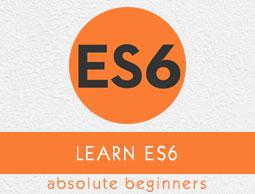ES6 - New String Methods
Following is a list of methods with their description.
Template Literals
Template literals are string literals that allow embedded expressions. Templatestrings use back-ticks (``) rather than the single or double quotes. A template string could thus be written as −
var greeting = `Hello World!`;
String Interpolation and Template literals
Template strings can use placeholders for string substitution using the ${ } syntax, as demonstrated.
Example 1
var name = "Brendan";
console.log('Hello, ${name}!');
The following output is displayed on successful execution of the above code.
Hello, Brendan!
Example 2: Template literals and expressions
var a = 10;
var b = 10;
console.log(`The sum of ${a} and ${b} is ${a+b} `);
The following output is displayed on successful execution of the above code.
The sum of 10 and 10 is 20
Example 3: Template literals and function expression
function fn() { return "Hello World"; }
console.log(`Message: ${fn()} !!`);
The following output is displayed on successful execution of the above code.
Message: Hello World !!
Multiline Strings and Template Literals
Template strings can contain multiple lines.
Example
var multiLine = `
This is
a string
with multiple
lines`;
console.log(multiLine)
The following output is displayed on successful execution of the above code.
This is
a string
with multiple
line
String.raw()
ES6 includes the tag function String.raw for raw strings, where backslashes have no special meaning. String.raw enables us to write the backslash as we would in a regular expression literal. Consider the following example.
var text =`Hello \n World`
console.log(text)
var raw_text = String.raw`Hello \n World `
console.log(raw_text)
The following output is displayed on successful execution of the above code.
Hello
World
Hello \n World
Tagged Templates
A tag is a function which can interpret and process a template literal. A tag appears in front of the template literal. Syntax is shown below.
Syntax
let output_fromTag = tagFunction `Template literal with ${variable1} , ${variable2}`
The tag function implementation syntax is as given below −
function tagFunction(literals,...variable_values){
//process
return "some result"
}
Example
Following Example defines a tag function myTagFn(). It displays the parameters passed to it. After displaying it returns Done to the caller.
<script>
function myTagFn(literals,...values){
console.log("literal values are");
for(let c of literals){
console.log(c)
}
console.log("variable values are ");
for(let c of values){
console.log(c)
}
return "Done"
}
let company = `Howcodex`
let company_location = `Mumbai`
let result = myTagFn `Hello this is ${company} from ${company_location}`
console.log(result)
</script>
The output of the above code will be as stated below −
//literal
literal values are
Hello this is
from
//values
variable values are
Howcodex
Mumbai
Done
Example
The below tag function takes a template literal and converts it to upper case as shown below −
<script>
function convertToUpperTagFn(literals, ...values) {
let result = "";
for (let i = 0; i < literals.length; i++) {
result += literals[i];
if (i < values.length) {
result += values[i];
}
}
return result.toUpperCase();
}
let company = `Howcodex`
let company_location = `Mumbai`
let result = convertToUpperTagFn `Hello this is ${company} from ${company_location}`
console.log(result)
</script>
The output of the above code will be as mentioned below −
HELLO THIS IS TUTORIALSPOINT FROM MUMBAI
String.fromCodePoint()
The static String.fromCodePoint() method returns a string created by using the specified sequence of unicode code points. The function throws a RangeError if an invalid code point is passed.
console.log(String.fromCodePoint(42))
console.log(String.fromCodePoint(65, 90))
The following output is displayed on successful execution of the above code.
*
AZ


